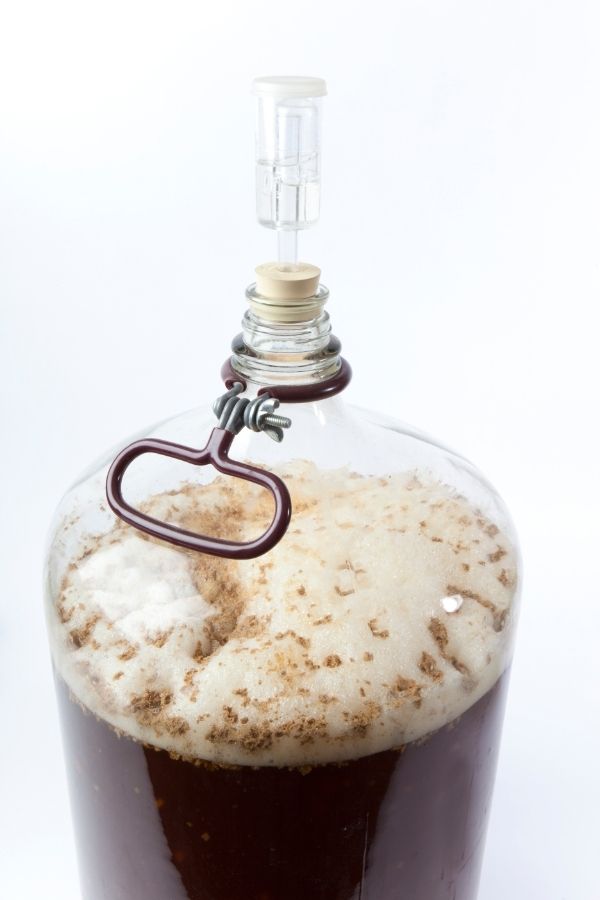Yeast Attenuation – A Complete Guide

Yeast attenuation is a measure of how much of the sugar in a beer wort or wine must a yeast will ferment.
In this article, we will take a look at what attenuation actually means, how to measure it and why we should think about the attenuation of the yeast we select.
Table of Contents
The Difference Between High & Low Attenuation
When you look at fact sheets and yeast packages they typically state the attenuation as high, medium, or low attenuation.
High attenuating yeast indicates that the particular strain ferments more of the sugars available in a wort relative to other yeast strains. This results in a drier finish in the finished beer.
A low attenuating yeast strain ferments less of the sugars and in turn leaves the finished drink slightly sweeter.
Attenuation is also expressed as a percentage and is easy to calculate according to the amount of sugar in the wort before and after fermentation.
- 100% attenuation would indicate that all the sugar available to the yeast have been converted to alcohol.
- 50% attenuation would tell us that half of the sugars in the wort or must have been fermented by the yeast leaving half in the finished beer or wine.
- 75% attenuation would tell us that three quarters of the sugar in the wort have been fermented by the yeast
How To Measure Attenuation
The attenuation that we homebrewers measure is calculated by taking hydrometer readings before and after fermentation.
Before fermentation, we have the original gravity which measures the density of wort or must in comparison to pure water. The higher the amount of sugar the higher the density of the liquid.
After fermentation, the yeast has converted a certain amount of those sugars into alcohol and carbon dioxide. The decrease in sugar and increase in alcohol reduces the density of the liquid and the hydrometer reading is taken telling us the final gravity.
Once we have the original gravity and the final gravity we can use these two measurements to calculate the apparent attenuation with the following formula:
Apparent Attenuation = (OG – FG)/OG
An example of this calculation in the case for a typical pale ale at a gravity of 1.048 might be the following:
Apparent Attenuation = (48 – 10) / 48 = 79%
The original gravity of the pale ale is 1.048 and the final gravity is 1.010. We take the final gravity from the original gravity and then divide the result by the original gravity to express the result as a percentage which in this case is 79%
This ABV Calculator will show you the apparent attenuation:
What Is Meant By Apparent Attenuation
You may have noticed the term apparent attenuation used above. The attenuation that is being measured using a hydrometer isn’t really the exact attenuation. The reason for this is because of the way a hydrometer works
A hydrometer measures density compared to pure water which is indicated by a reading of 1.000.
When sugar is added in the form of wort or must the density changes make the hydrometer float higher.
After fermentation, we have less sugar but also an increase in alcohol. Alcohol has a lower density than pure water so we are not really just measuring the reduction in sugars but also the increase in alcohol.
The attenuation here is called the apparent attenuation because this is what we are able to read with a hydrometer.
All home brewers and yeast strains detail the apparent attenuation because without a dedicated laboratory there is no way for most brewers to measure the exact attenuation.
Why Do We Need To Know The Attenuation?

The real reason to take notice of the attenuation is that it is going to impact the body, sweetness, and flavour of a beer or wine.
- If you brew a high ABV beer that you have fermented with a low attenuating yeast it may end up far too sweet and cloying.
- If you intend to make a sweet wine and ferment with a high attenuating yeast strain it will result in a wine that is too dry.
Any yeast strain that you buy will detail the level of attenuation. Most manufacturers will list the attenuation as either high, medium or low.
When you come to select the yeast strain you use for a particular brew you need to make the decision as to what degree of attenuation is suitable for the particular style of beer or wine you are making.
Other Factors That Can Affect The Attenuation
The degree of attenuation for a particular yeast is a primary factor in the degree of fermentability but there are also other variables that could alter the finished beer or wine.
Yeast viability and health will also play a role in fermentation. If you pitch too little yeast or yeast that has been stored longer then the fermentation will be sluggish and you may not achieve the degree of attenuation that is listed for a particular yeast strain.
When making beer you may adjust mashing temperatures and this will affect the fermentability of the resulting wort.
Poor must of wort fermentability can also be the result of a lack of yeast nutrients. This is particularly a problem in fruit winemaking or mead making where it is really important to add yeast nutrients in order to get good fermentability.




Leave a Reply
Want to join the discussion?Feel free to contribute!